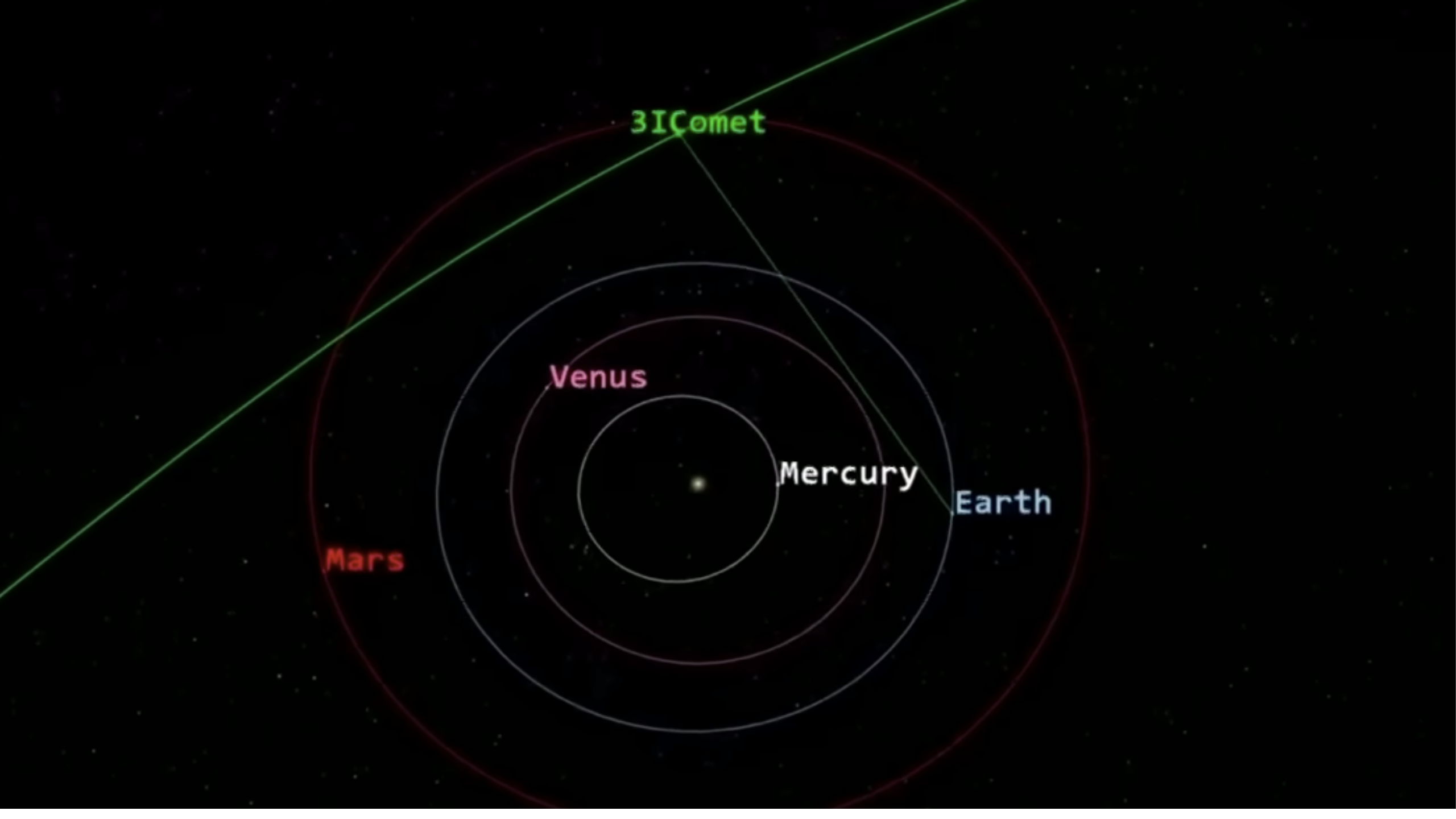Copyright ibtimes

While scientists are confident it is a comet, its origins have ignited wild theories, including the persistent idea that it could be an alien spacecraft. As it approaches its perihelion—its closest point to the Sun—on 29 October 2025, one question has captured the public's imagination: Will 3I/ATLAS hit Earth? From hard science at NASA to bizarre prophecies from the past, here is what is being said about the cosmic traveller. Did Nostradamus Predict the Arrival of 3I/ATLAS? As reported by USA Herald, some enthusiasts and historians believe that Nostradamus may have hinted at events like the arrival of 3I/ATLAS. One quatrain often cited reads: 'From the cosmos, a fireball will rise, a harbinger of fate; the world pleads. Science and fate in a cosmic dance, the fate of the Earth, a second chance.' Because Nostradamus' writings are vague and metaphorical, interpretations differ widely. Still, the verse has resurfaced online, fuelling debates and social media theories linking ancient prophecy to the modern interstellar comet. Baba Vanga's Alien Prophecy and 3I/ATLAS Baba Vanga, the late Bulgarian clairvoyant who died more than 25 years ago, continues to trend on social media due to her alleged predictions. Many of her 2025 prophecies circulating online are grim, often involving large-scale destruction and loss of life. Among them is a claim that 'aliens' would visit Earth in 2025, a prediction that has resurfaced after the discovery of the interstellar object 3I/ATLAS. As per reports cited by NDTV, Vanga allegedly warned, 'Humanity will make contact with extraterrestrial life, possibly leading to a global crisis or apocalypse'. However, there is very little credible source material found on this prediction over 3I/ATLAS. An Alien 'Mothership'? Avi Loeb's Take on 3I/ATLAS According to Harvard professor Avi Loeb, who started monitoring 3I/ATLAS shortly after it was discovered in July 2025, there is a more unusual way to interpret the data. He speculates that if the object were some sort of massive 'mothership', it might be able to use the gravity of the Sun to launch smaller probes. This would take advantage of the Oberth effect, a technique that enables spacecraft to accelerate significantly while slingshotting around a massive body like a star or planet. Loeb's hypothesis, while outside the mainstream, paints a fascinating picture of a potential technological artefact cleverly using physics to its advantage. Loeb also pointed to earlier simulations that showed that, in an ideal scenario, NASA's Juno spacecraft might have intercepted 3I/ATLAS near Jupiter. While purely hypothetical, he argues that this underscores how rare such interstellar encounters are and how humanity may be missing valuable opportunities to investigate them up close. NASA's Official Trajectory for 3I/ATLAS: No Impact For those concerned about doomsday scenarios, NASA has offered a clear and reassuring prediction. According to the space agency, while the object designated 3I/ATLAS will travel into the inner solar system, it will not approach Earth closely and will not hit Earth. The closest the comet will come is approximately 1.8 astronomical units. This is a vast distance, translating to about 170 million miles (270 million kilometres) away, or nearly twice the distance from the Earth to the Sun. NASA's analysis of the comet's trajectory confirms that there is no risk of impact with our planet, allowing scientists and sky-watchers to observe its journey with curiosity rather than fear. A Close Encounter: How 3I/ATLAS Will Be Studied The comet's journey toward the Sun will also be a milestone event in other ways: some human-made spacecraft already in space may cross through its ion tail and gather new data about it. This presents an unexpected scientific opportunity. Between 25 October and 6 November, missions such as the Hera mission (from the European Space Agency) and Europa Clipper (from NASA) might pass through the comet's trail, analysing its composition from a unique vantage point. As 3I/ATLAS continues its silent journey past our Sun, it leaves two distinct trails: one of gas and dust that our spacecraft hope to sample, and another of human fascination, fear, and wonder. While science assures us of our planet's safety, the visitor from deep space has proven to be a cosmic mirror, reflecting our greatest hopes and anxieties about the universe. Whether it is a simple comet, an alien 'mothership,' or a harbinger of prophecy, its true nature will soon be tested. Originally published on IBTimes UK



